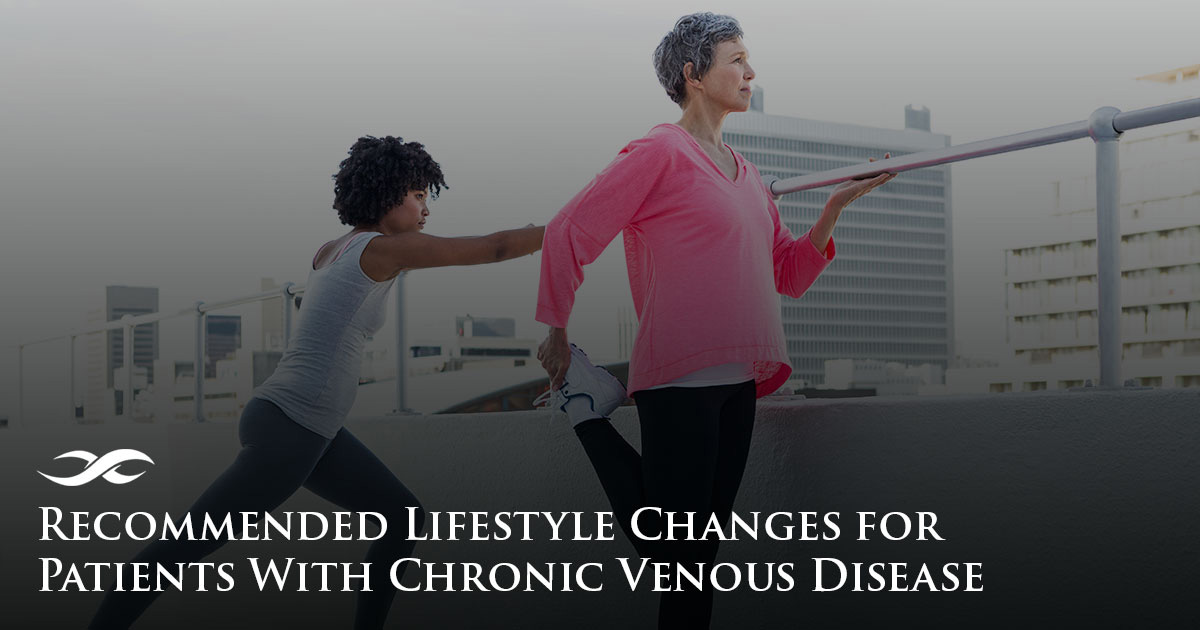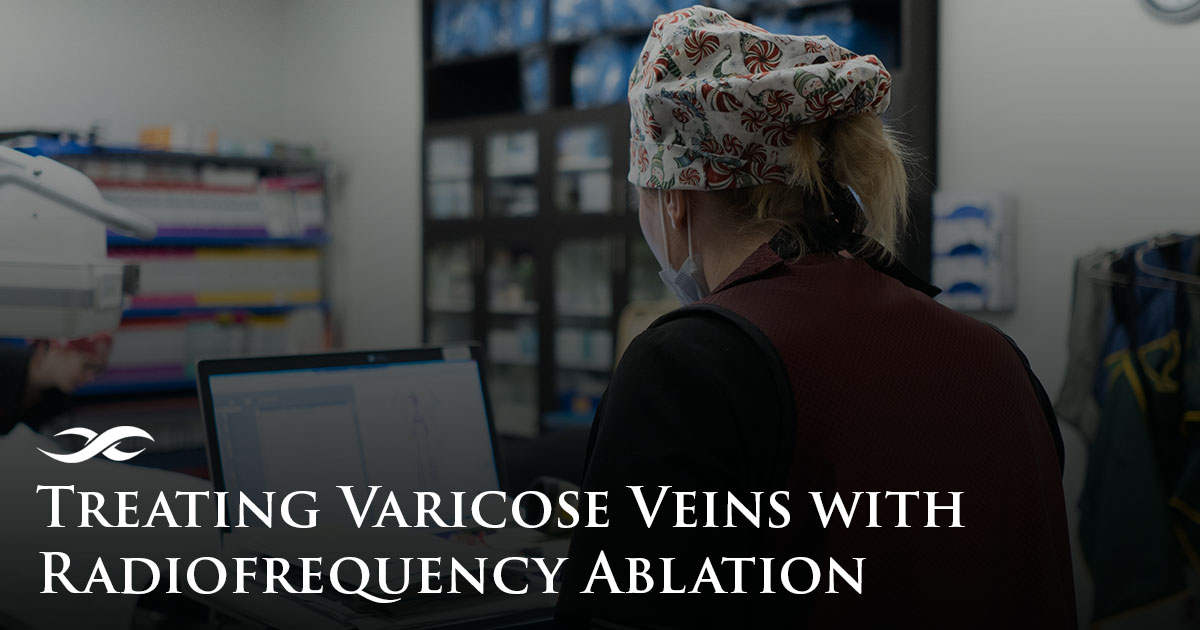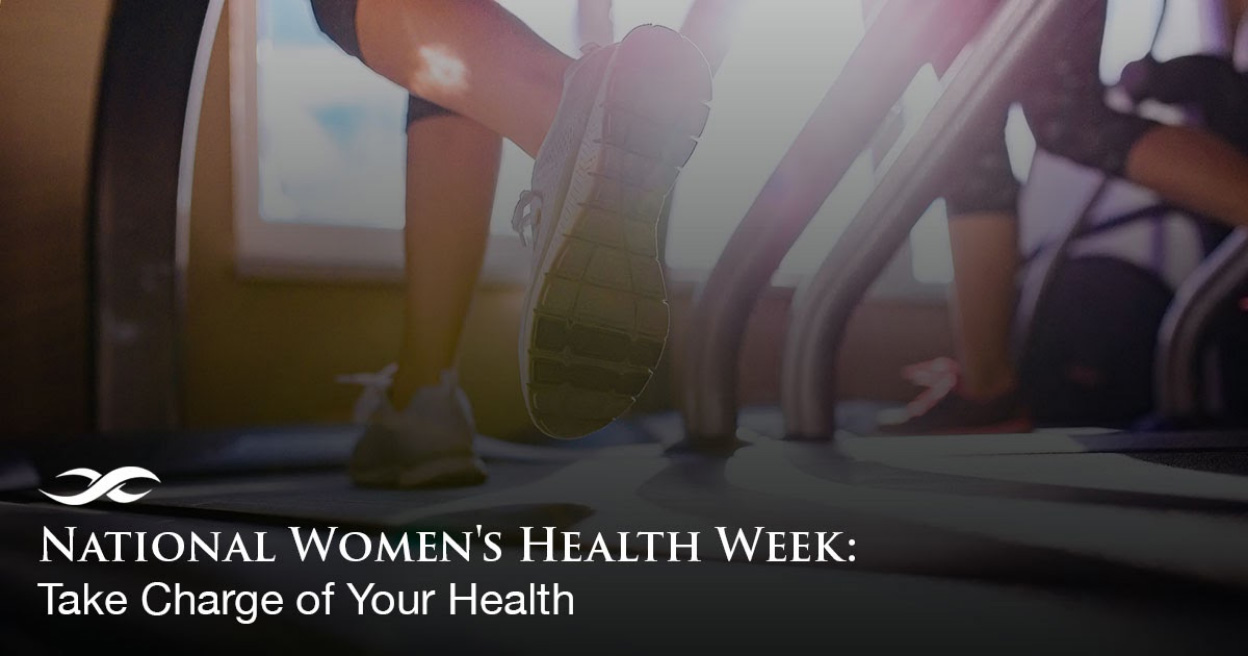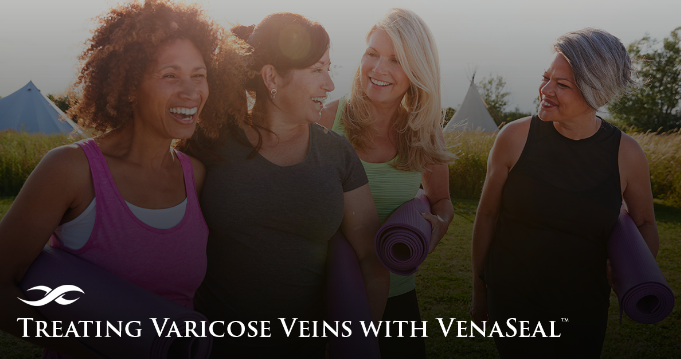Recommended Lifestyle Changes for Patients With Chronic Venous Disease

Chronic venous disease is an incredibly common condition. According to the Society for Vascular Surgery, it may affect up to 40% of the US population. This condition occurs when weak or damaged valves in the veins of your legs are unable to efficiently pump the blood to the rest of your body. While for many people varicose veins are primarily a cosmetic concern, for other more severe cases varicose veins cause discomfort and lead to more serious problems.
Fortunately, mild cases of chronic venous disease can sometimes be managed with lifestyle changes. The physicians at Vascular & Vein Institute of Siouxland recommend the following lifestyle changes for patients with chronic venous disease.
Learn the symptoms and actively monitor them
One of the first signs of chronic venous disease is varicose veins. Common symptoms of varicose veins include the following:
- Enlarged, dark purple or blue veins
- Swelling
- Aching pain or heaviness in one or both legs
- Itching near affected veins
- Muscle cramps
If you begin to exhibit symptoms, it’s important to closely monitor them to provide your physician with as much information as possible. The physicians at Vascular & Vein Institute of Siouxland recommend writing down symptom information in a notebook.
Have annual checkups with your primary care physician
Annual checkups and screenings with your primary care physician are integral to your overall health. These visits can help to identify health issues before they progress into bigger problems. Annual checkups are also a great time to get your health questions answered.
Maintain a healthy weight
As mentioned above, varicose veins are the result of weak or damaged valves in the veins of your legs. These valves allow the blood to flow backward and pool in the veins, causing them to enlarge and twist. Being overweight or obese can increase the amount of pressure on your veins, causing more blood to pool and worsen symptoms. While losing weight cannot reverse the damage already done, it can slow the progression of symptoms.
The physicians at Vascular & Vein Institute of Siouxland recommend working with your primary care physician to develop a safe and effective weight loss plan.
You Might Also Like: Treating Varicose Veins with Radiofrequency Ablation
Exercise regularly
Regular exercise helps improve blood flow throughout the entire body, including the legs. Engaging in regular exercise can help slow the progression of varicose veins and may help to relieve pain.
According to the Physical Activity Guidelines for Americans, “Adults gain most of these health benefits when they do the equivalent of 150 to 300 minutes (2 hours and 30 minutes to 5 hours) of moderate-intensity aerobic physical activity each week.” Examples of moderate-intensity aerobic physical activity include the following:
- Brisk walking (2.5 miles per hour or faster)
- Bicycling (10 miles per hour or slower on level terrain)
- Active forms of yoga
- General work around the house (cleaning, yard work, etc).
The physicians at Vascular & Vein Institute of Siouxland recommend working with your primary care physician to develop a safe exercise plan.
Quit smoking
Smoking can cause damage to the vascular system as a whole. It contributes to the narrowing of blood vessels and restricts circulation, which can lead to further development of varicose veins.
Wear compression garments
Compression garments are designed to place mild pressure on the legs to help encourage blood to flow upward instead of pooling in the legs. Compression garments are offered both over-the-counter and by prescription.
Avoid prolonged periods of sitting or standing
Staying seated or standing for a large amount of time places additional stress on leg veins. It is important to incorporate regular movement into your daily routine.
The physicians at Vascular & Vein Institute of Siouxland recommend setting multiple reminders to move throughout the day.
Regularly elevate feet
Making it a habit to regularly elevate your feet above your heart can help encourage blood to flow in the correct direction, improving circulation. Elevating the feet can help slow the progression of varicose veins and help relieve pain and swelling.
You Might Also Like: Treating Varicose Veins with VenaSeal™
Treating Varicose Veins with Radiofrequency Ablation

Chronic venous disease is an incredibly common condition that may affect up to 40% of the US population according to the Society for Vascular Surgery. The physicians at Vascular & Vein Institute of Siouxland specialize in treating chronic venous disease and varicose veins, a common symptom of the condition.
Read More
National Women’s Health Week: Take Charge of Your Health

It’s National Women’s Health Week this week! This health initiative was put into place by the U.S. Department of Health and Human Services’ Office on Women’s Health to serve ‘as a reminder for women to make their health a priority and build positive health habits for life.’
While each woman takes charge of their health in different ways, some methods to do so include the following:
- Yearly checkups
- Preventive screenings
- Vaccines
- Active lifestyle
- Healthy eating
The physicians at Vascular & Vein Institute of Siouxland specialize in treating many conditions, some of which affect more women than men. Keep reading to learn more about uterine fibroids and varicose veins.
Uterine Fibroids
Uterine fibroids are common, with more than 200,000 new cases in the US each year. According to the Society of Interventional Radiology, 20-40% of women age 35 and older have fibroids of significant size.
Uterine fibroids are noncancerous growths that occur in the muscle cells of the uterus. These fibroids don’t spread to other areas of the body, typically aren’t dangerous, and often appear during childbearing years. Below are common symptoms experienced by patients with uterine fibroids:
- Pelvic pressure or pain
- Heavy menstrual bleeding
- Menstrual periods that last more than a week
- Severe cramps
- Pain during or following intercourse
- Abdominal enlargement
- Pain down the back of one or both legs
- Difficulty completely emptying bladder
- Frequent urination
- Constipation
Learn more about uterine fibroids and their treatment options on our blog Uterine Fibroids: What You Need to Know.
Varicose Veins
In the US, 23% of the population are affected by varicose veins. While for many of those people varicose veins are primarily a cosmetic concern, for other more severe cases varicose veins cause discomfort and lead to more serious problems.
Varicose veins are large, twisted veins that appear most often in the legs and feet. They are the result of weak or damaged valves in the veins of your legs that are unable to efficiently pump the blood to the rest of your body. These valves allow the blood to flow backward and pool in the veins, causing them to enlarge and twist. Common symptoms of varicose veins include the following:
- Enlarged, dark purple or blue veins
- Swelling
- Aching pain or heaviness in one or both legs
- Itching near affected veins
- Muscle cramps
Learn more about varicose veins and a popular treatment method on our blog Treating Varicose Veins with VenaSeal™.
Treating Varicose Veins with VenaSeal™

The physicians at Vascular & Vein Institute of Siouxland specialize in treating varicose veins in patients suffering from chronic venous disease. In the US alone, 23% of the population are affected by varicose veins. While for many of those people varicose veins are primarily a cosmetic concern, for other more severe cases varicose veins cause discomfort and lead to more serious problems.
Varicose veins are large, twisted veins that appear most often in the legs and feet. They are the result of weak or damaged valves in the veins of your legs that are unable to efficiently pump the blood to the rest of your body. These valves allow the blood to flow backward and pool in the veins, causing them to enlarge and twist.
Symptoms
Many patients with varicose veins experience one or more of the following symptoms.
- Enlarged, dark purple or blue veins
- Swelling
- Aching pain or heaviness in one or both legs
- Itching near affected veins
- Muscle cramps
As we mentioned above, many people with varicose veins don’t experience any pain. For those that do, however, their symptoms are often worsened by prolonged periods of sitting or standing.
Risk factors
Did you know? Women are more than twice as likely as men to develop varicose veins. Below are the most common risk factors associated with this condition.
- Women – largely due to hormonal changes
- Older adults
- Pregnancy
- Obesity
- Family history
- Inactive lifestyle
Treating Varicose Veins with VenaSeal™
VenaSeal™ is one of the treatment methods the physicians at Vascular & Vein Institute of Siouxland use to treat varicose veins. It is a highly effective treatment method – with a 94.4% closure rate.
While treating varicose veins with VenaSeal™, your physician injects the diseased vein with a small amount of medical adhesive to permanently seal the vein and reroute blood through healthy veins nearby. Since symptoms are caused by the diseased vein, they begin to improve as soon as the vein is sealed.
Many patients feel little to no pain during and after the procedure, and experience minimal bruising. Treating varicose veins with VenaSeal™ is a minimally invasive outpatient procedure, meaning patients are able to return home the same day. In fact, many are able to return to their normal activity level immediately following the procedure.
Call (605) 217-5617 to schedule an appointment with one of our physicians.




